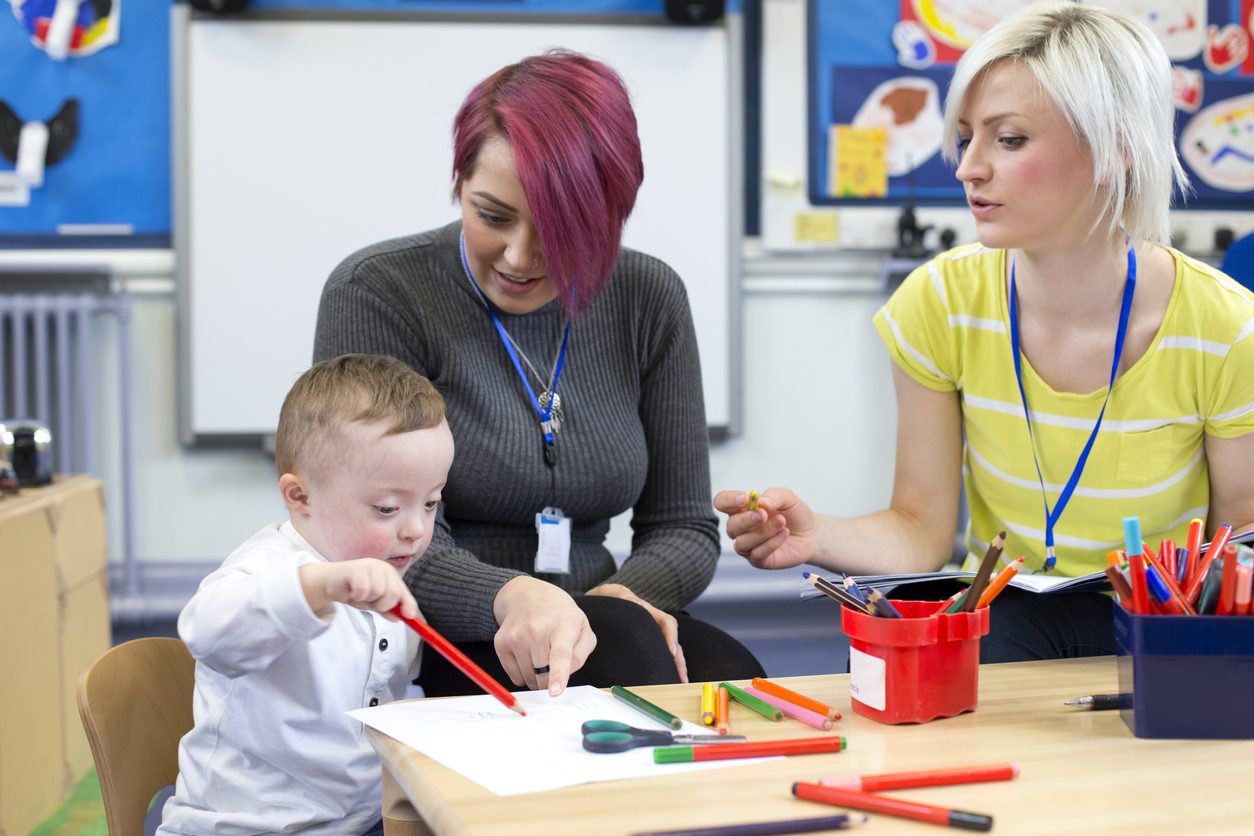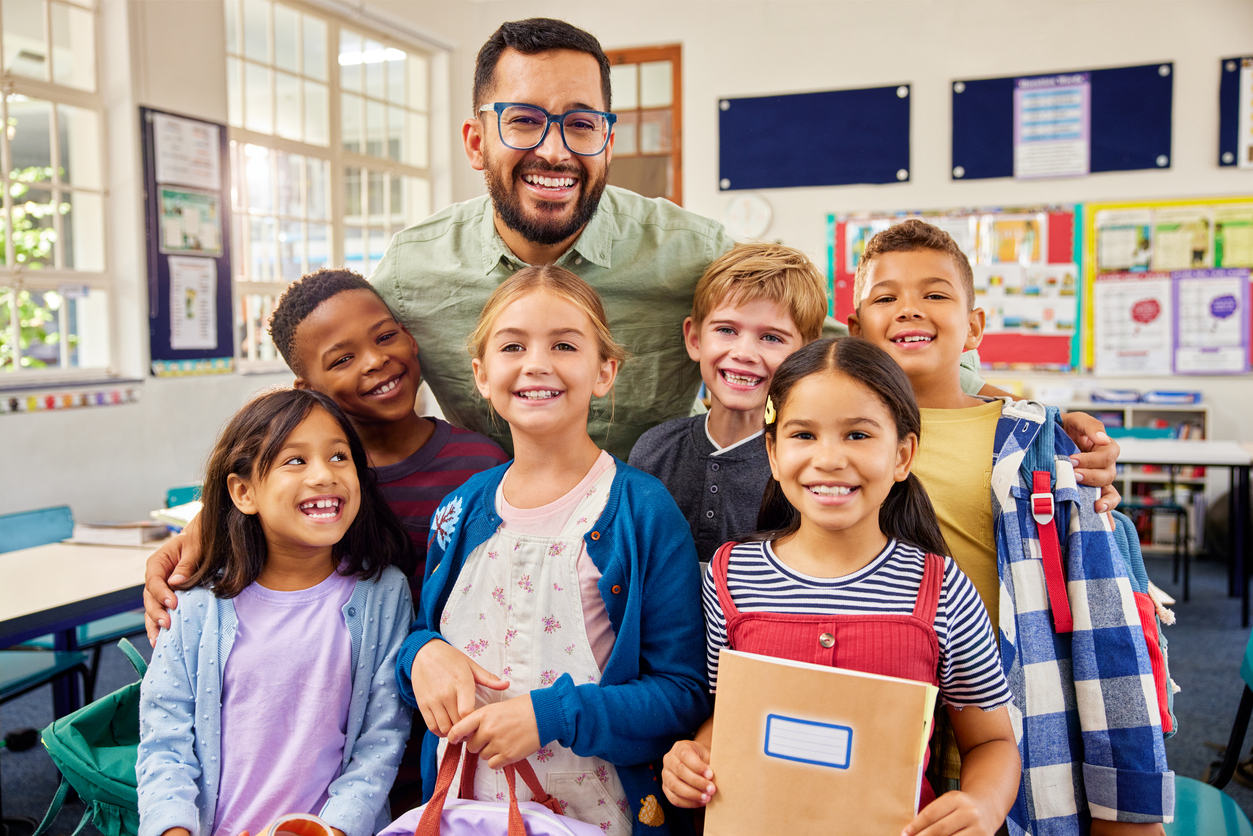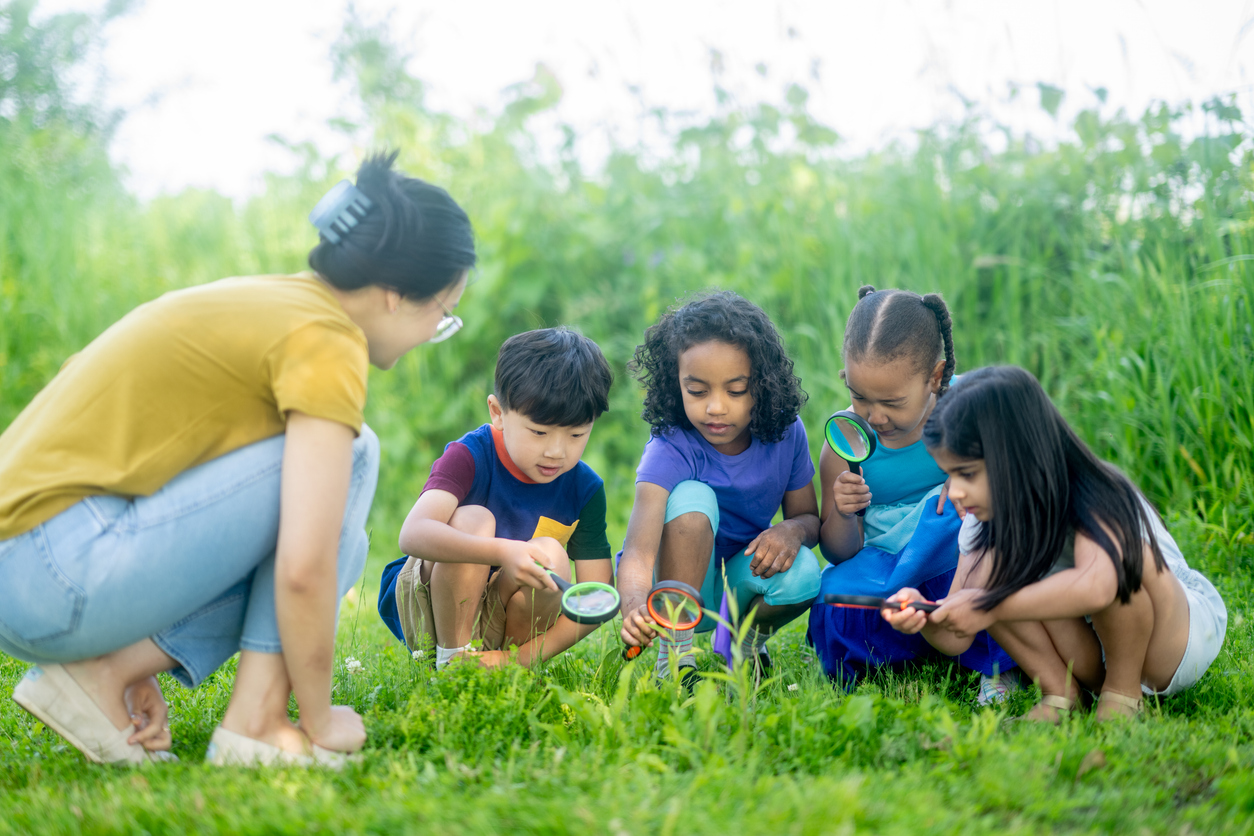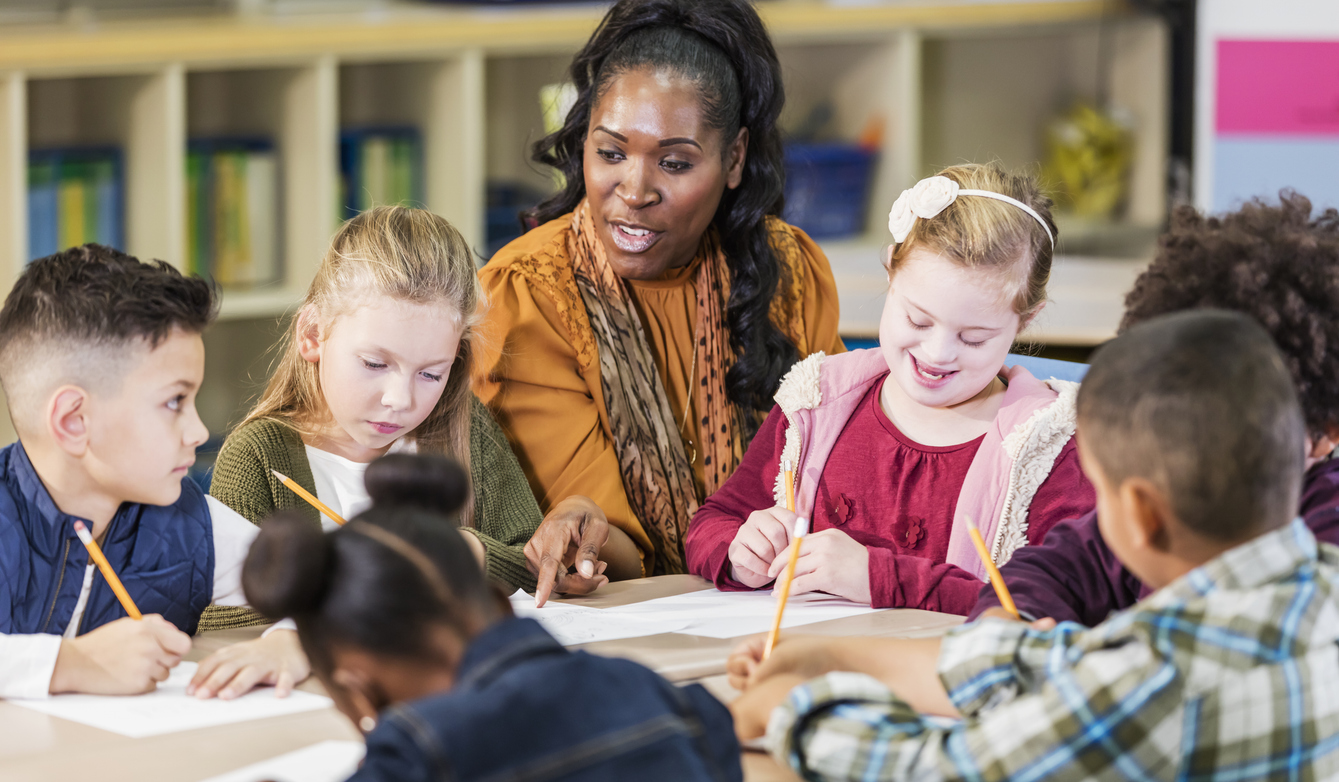What Are the Benefits of Collaboration in Special Education?
Written by:
Wilson College
• Nov 8, 2023

What Are the Benefits of Collaboration in Special Education?
Statistics from the National Center for Education (NCES) show in 2021-2022, more than 7 million U.S. students—or 15% of those enrolled in public schools—received services under the Individuals with Disabilities Education Act (IDEA). This provision mandates public school education for students whose disabilities affect their academic performance.
Increasingly in today’s classrooms, students who receive these services are learning in an environment that features collaborative education.
Collaborative education includes special education and general education teachers, as well as those who assist them (from parents to therapists), working in tandem. The objective is to ensure all learners—including those with behavioral, cognitive, physical, or emotional challenges—receive the support they need.
To encourage its use, many programs that prepare special education teachers—including bachelor’s degree programs in special education —are emphasizing making sure collaborative methods play a role in helping students succeed.
What Is Collaboration in Special Education?
Various professionals and loved ones typically work to ensure students with social, mental, or physical disabilities have the best opportunity to succeed in school. Collaboration in special education involves all of these parties, who combine their efforts to plan and implement services in support of student success.
The goal of collaboration in special education is to ensure all students receive lessons and assignments that meet their individualized needs.
Who Does Collaboration in Special Education Involve?
Those who support a student who has disabilities may provide services ranging from academic assistance to emotional support. A team that promotes educational success for students with functional needs may include the following.
- General education teachers—Provide education to students of various abilities and needs according to school district curricula
- Special education teachers—Adapt students’ lessons to accommodate students’ behavioral, cognitive, physical, or emotional disabilities
- Paraprofessionals—Assist teachers with instruction and with tasks that address behavioral issues
- Family members and other loved ones—Ensure students’ day-to-day needs are met and support school-based lessons at home
- School administrators—Lead all aspects of school activities and services, ensuring compliance with educational regulations and guidelines
- Speech therapists—Help students with communicating and eating as needed
- Occupational therapists—Assist students in performing a variety of common tasks as needed
How Do Professionals and Families Collaborate in Special Education?
When the various parties who support students’ academic success collaborate, they interact face-to-face or online to determine how their collective efforts can best help students with disabilities. They share their diverse knowledge and experience, keeping each other abreast of students’ progress and working to find solutions that provide opportunities for all students to excel in school.
For teachers, this collaboration often means educating students of all needs and abilities in integrated settings. In these cases, general education teachers provide instruction to the class, while special education teachers adapt that education to meet the needs of students with disabilities and assess their academic progress.
Why Is Collaboration in Special Education Beneficial?
In special education, collaboration offers a host of benefits for all students—not just those with disabilities—and for the many people who support them. Following are six key benefits of working together to meet the needs of those with social, mental, or physical disabilities.
Promotes Inclusive Learning
When teams of professionals are available to support learners’ academic, physical, and emotional needs, students are more likely to have access to appropriate types of assistance. Additionally, integrating students with disabilities into general education classrooms promotes a sense of belonging for everyone involved.
Supports Differentiated Instruction
In helping to meet a broad range of student needs, collaboration in special education also provides greater opportunity for catering to individual skills and abilities. This differentiated instruction enables educators to reach students by tailoring lessons to their unique interests, learning styles, and aptitudes.
Encourages Student Engagement
When students are surrounded not only by their peers but also by multiple supportive staff members, they are more likely to receive the individualized attention that fosters engagement. An engaging special education classroom or general education setting can help students with disabilities strengthen not only their learning, but their social skills.
Enhances Educational Transparency
Collaboration in special education requires regular contact among all those who are working as a team. This open communication among professionals and with parents:
- Keeps everyone on the same page
- Places value on all knowledge and opinions
- Builds trust and respect
Incorporates Wide-Ranging Expertise
From special education teachers who tailor lessons to the needs of students with disabilities, to professionals who provide social and emotional support, everyone at the table brings a different set of skills and experiences. By collaborating to support the student, these professionals and family members can combine their knowledge to identify concerns and find innovative solutions.
Broadens Professional Knowledge
Educators who collaborate with other professionals in planning and problem solving can strengthen their own skills and knowledge and draw from the expertise of others. These opportunities for professional development are critical as educators gain experience. This skill development can also help build on their salary as a special education teacher and, if they choose, help them pursue other roles in the field.
How Can Educators Encourage Collaboration in Special Education?
By taking some key actions, teachers can facilitate the collaboration in special education that holds so many benefits for students, educators, and families.
Taking Initiative
Teachers should reach out to others who support students who have social, physical, and mental disabilities; seeking out ways they can partner to effectively provide assistance. Special education and general education teachers, for example, can plan and present lessons together.
Defining Roles
When collaborating, each individual responsible for working with the student should have a defined role. Teachers can lead the way in ensuring each individual understands they have an important part to play in the success of the student—and that everyone fulfills their respective responsibilities.
Communicating Openly
Whether communicating with colleagues or parents and other loved ones, it’s important for teachers to keep others informed of plans to support the student and how those efforts are progressing. Regular dialogue with parents should include a focus on any concerns the family may have as well as any ways that loved ones can help students learn at home.
Establishing Culture
Teachers also can help facilitate collaboration in special education by promoting a culture of inclusivity in their classrooms. They should show acceptance of, and support for, other professionals, students, and family members and set clear expectations for interaction.
Being Open-Minded
Assessments are critical to ensuring students with disabilities receive services that effectively address their needs. Teachers should regularly evaluate progress in a student’s educational plans; welcoming ideas and opinions from others about any adjustments that could improve their efforts.
Support Inclusive Education Through Collaboration
If you’re ready to explore becoming a collaborative special education teacher, you would do well to learn more about the Wilson College Online Bachelor of Arts in Special Education degree program. Featuring asynchronous classes in a flexible, online format, the program focuses on inclusive educational approaches that help ensure all students receive the education and services that meet their unique needs.
Discover how the Wilson College Online B.A. in Special Education can help you achieve your professionals goals.
Recommended Readings
Master of Teaching vs. Master of Education: What’s the Difference?
What Can You Do With an Early Childhood Education Degree?
What Does a Special Education Coordinator Do?
Sources:
EduEdify, “What Is Collaboration in Special Education?”
National Center for Education Statistics, Students With Disabilities
Nemours KidsHealth, “What Is Special Education?”
ProCare Therapy, “The Role of General Education Teachers”
Reading Rockets, “What Is Differentiated Instruction?”
TeacherVision, “Collaboration Between General and Special Education Teachers”


